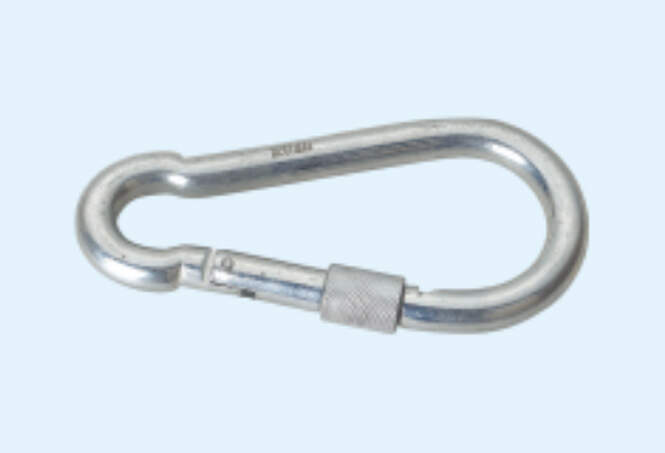Snap Hooks vs. Carabiners vs. Quick Links: A Comprehensive Comparison
July 08,2023

Connectors play a crucial role in various applications, ranging from outdoor activities to industrial settings. Snap hooks, carabiners, and quick links are among the most popular types of connectors. In this blog post, we will dive into the world of connectors, specifically focusing on snap hooks and comparing them with carabiners and quick links. By understanding their features, applications, advantages, and limitations, you will gain a comprehensive understanding of these connectors.
1. Understanding Snap Hooks
1.1 Definition and Design
- Snap hooks, also known as spring hooks or snap links, are a type of connector featuring a spring-loaded gate mechanism, allowing for secure and quick fastening.
- They typically consist of a hook-shaped body, a hinged gate, and a spring mechanism, enabling easy attachment and detachment.
- Snap hooks are available in various sizes, materials, and load capacities, making them versatile for different applications.
1.2 Applications
- Snap hooks are commonly used in recreational activities such as camping, hiking, and rock climbing. They serve as attachment points for gear, ropes, and straps.
- They are also utilized in industrial settings, particularly in rigging, lifting, and securing loads.
- In equestrian sports, snap hooks are employed for attaching reins, lead ropes, and other horse-related accessories.
2. Comparing Snap Hooks with Carabiners
2.1 Design and Mechanism
- Carabiners are connectors specifically designed for climbing and mountaineering activities.
- Unlike snap hooks, carabiners feature a distinct shape, an oblong or D-shaped body, with a hinged gate mechanism.
- Carabiners often have a more prominent gate opening and are built to withstand heavy loads and impacts.
2.2 Applications
- While snap hooks have a wider range of applications, carabiners are primarily used in climbing and mountaineering scenarios.
- Carabiners provide climbers with a secure attachment point for ropes, belay devices, and harnesses, ensuring utmost safety during ascent and descent.
2.3 Load Ratings and Safety
- Carabiners typically have higher load ratings than snap hooks, as they are designed to withstand more substantial forces.
- When choosing between snap hooks and carabiners, it is crucial to consider the intended load and select the appropriate connector accordingly.
3. Snap Hooks vs. Quick Links
3.1 Design and Applications
- Quick links, also known as screw links, are connectors featuring a threaded barrel and screw-on gate mechanism.
- They resemble metal loops with an opening that can be twisted and unscrewed for attachment and detachment purposes.
- Quick links are common in applications that require semi-permanent connections, such as swings, playground equipment, and dog leashes.
3.2 Load Ratings and Versatility
- Snap hooks often have higher load ratings compared to quick links, making them more suitable for heavy-duty applications.
- However, quick links are versatile and can tolerate slightly higher loads than carabiners, making them suitable for various non-climbing applications.
3.3 Ease of Use and Security
- Snap hooks excel in terms of ease of use, as their gate mechanism makes them quick and convenient for attachment and detachment.
- Quick links, on the other hand, require manual twisting and unscrewing, which takes slightly more time and effort.
Conclusion
Snap hooks, carabiners, and quick links are connectors that cater to diverse needs and applications. While each type has its unique design features, load capacities, and applications, snap hooks stand out for their versatility and ease of use. Carabiners excel in climbing scenarios, prioritizing safety and durability, while quick links provide semi-permanent connections in a variety of applications. By understanding the characteristics of these connectors, you can make informed decisions based on the specific requirements of your project or activity.